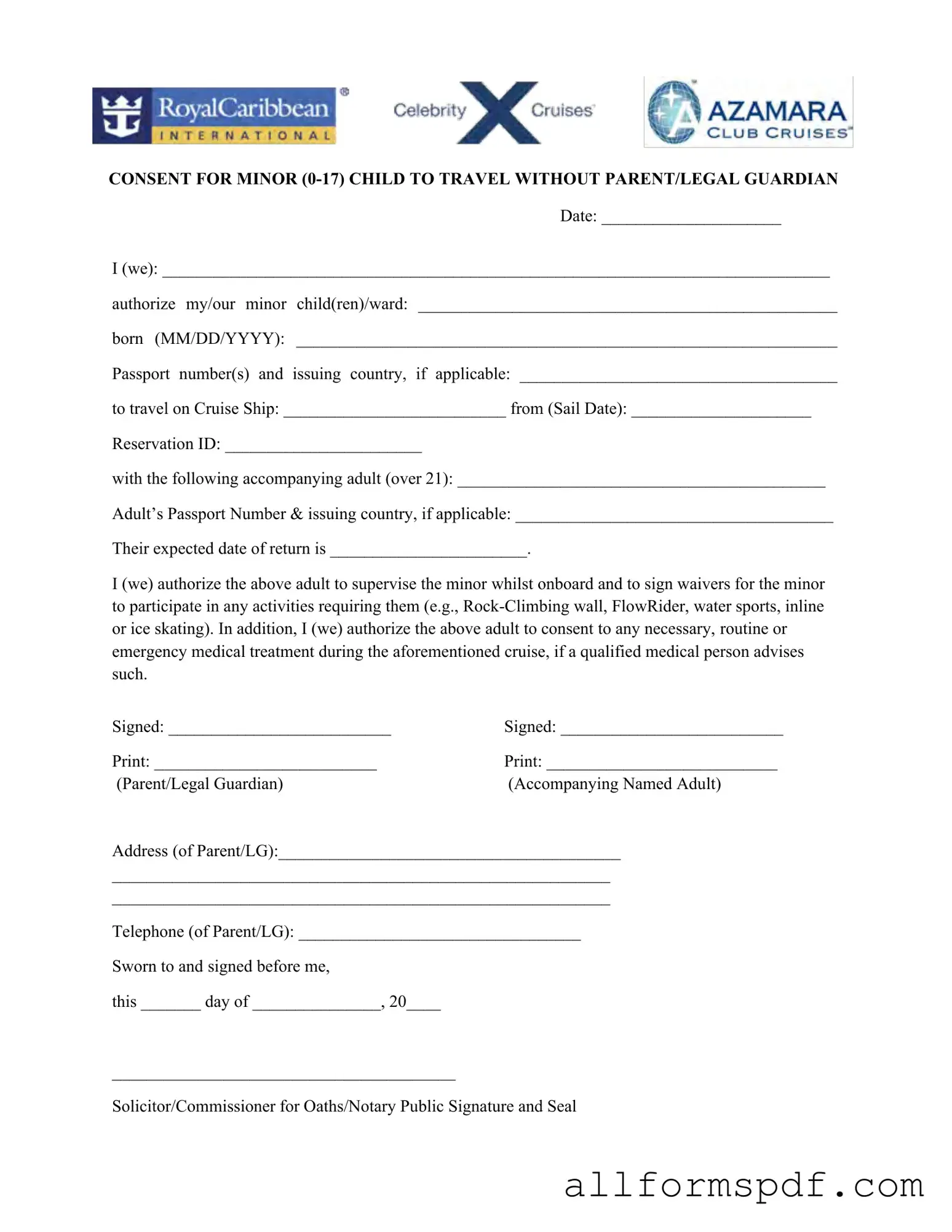Filling out the Royal Caribbean Parental Consent form can be a straightforward process, but many people encounter common pitfalls that can lead to delays or issues during travel. Understanding these mistakes can help ensure a smoother experience for families planning a cruise.
One frequent error is neglecting to provide complete information. Parents or guardians may forget to fill in essential details, such as the full names of all children traveling or the specific dates of the cruise. Incomplete forms can result in confusion or additional verification steps at the port.
Another common mistake involves failing to sign the form. While it may seem obvious, some individuals overlook the necessity of a signature, which is crucial for validating the consent. Without a signature, the form may be deemed invalid, preventing children from boarding the ship.
Additionally, many people do not check the age requirements for children traveling without a parent or guardian. Royal Caribbean has specific policies regarding the ages of minors and the necessary consent forms. Failing to adhere to these guidelines can lead to last-minute complications.
Some parents mistakenly assume that a digital signature is acceptable. However, many cruise lines, including Royal Caribbean, require a handwritten signature on the consent form. It is important to verify the requirements to avoid any misunderstandings.
Moreover, individuals often forget to include emergency contact information. Providing a reliable contact person can be essential in case of unforeseen circumstances. This oversight can create unnecessary stress for both the parents and the cruise staff.
Lastly, not keeping a copy of the completed form can be a significant oversight. Having a copy on hand can help in case questions arise at the port or during the cruise. It serves as a reference point and can alleviate concerns if any issues occur.
